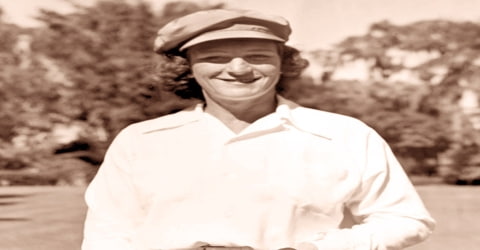Biography of Edgar Allan Poe
Edgar Allan Poe – American writer, editor, and literary critic.
Name: Edgar Allan Poe
Date of Birth: January 19, 1809
Place of Birth: Boston, Massachusetts, U.S.
Date of Death: October 7, 1849 (aged 40)
Place of Death: Baltimore, Maryland, U.S.
Occupation: Writer, Editor
Father: David Poe Jr.
Mother: Elizabeth Arnold Hopkins Poe
Spouse: Virginia Eliza Clemm Poe (m. 1836; died 1847)
Early Life
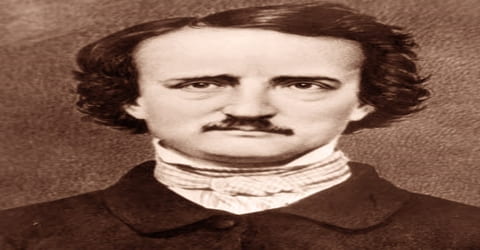
Edgar Allan Poe regarded as the father of modern detective story, was an American poet, author, and literary critic, and was born on 19th January 1809 in Boston, Massachusetts, U.S. He is famous for his tales and poems of horror and mystery, including “The Fall of the House of Usher,” “The Tell-Tale Heart” and “The Raven.” He was the second child of two white Southern actors. His father abandoned the family in 1810, and his mother died the following year.
Poe is best known for his poetry and short stories, particularly his tales of mystery and the macabre. He is widely regarded as a central figure of Romanticism in the United States and American literature as a whole, and he was one of the country’s earliest practitioners of the short story. Poe is generally considered the inventor of the detective fiction genre and is further credited with contributing to the emerging genre of science fiction. He was the first well-known American writer to try to earn a living through writing alone, resulting in a financially difficult life and career.
Orphaned at such a young age, he was adopted by John and Frances Alan, a wealthy merchant of Richmond, Virginia. In 1815 his foster parents moved to England where Poe attended school in Chelsea. He attended the University of Virginia but left after a year due to lack of money. Poe quarreled with Allan over the funds for his education and enlisted in the Army in 1827 under an assumed name. It was at this time that his publishing career began, albeit humbly, with the anonymous collection Tamerlane and Other Poems (1827), credited only to “a Bostonian”. With the death of Frances Allan in 1829, Poe and Allan reached a temporary rapprochement. However, Poe later failed as an officer cadet at West Point, declaring a firm wish to be a poet and writer, and he ultimately parted ways with John Allan.
In January 1845, Poe published his poem “The Raven” to instant success. His wife died of tuberculosis two years after its publication. For years, he had been planning to produce his own journal The Penn (later renamed The Stylus), though he died before it could be produced. Poe and his works influenced literature in the United States and around the world, as well as in specialized fields such as cosmology and cryptography. Poe and his work appear throughout popular culture in literature, music, films, and television. A number of his homes are dedicated museums today. The Mystery Writers of America present an annual award known as the Edgar Award for distinguished work in the mystery genre.
Childhood, Family and Educational Life
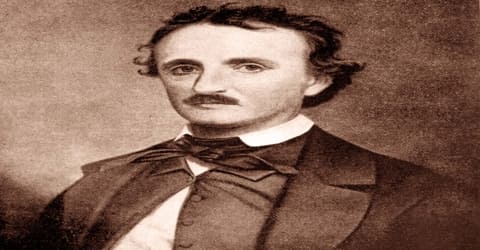
Edgar Allan Poe was born in Boston on January 19, 1809, the second child of English-born actress Elizabeth Arnold Hopkins Poe and actor David Poe Jr. He had an elder brother William Henry Leonard Poe, and a younger sister Rosalie Poe. Their grandfather David Poe Sr. had emigrated from County Cavan, Ireland, to America around the year 1750. Edgar may have been named after a character in William Shakespeare’s King Lear, a play that the couple was performing in 1809.
Poe was three years old when he lost both his father and mother. He was then taken into the home of John Allan, a successful Scottish merchant in Richmond, Virginia who dealt in a variety of goods, including tobacco, cloth, wheat, tombstones, and slaves. The Allans served as a foster family and gave him the name “Edgar Allan Poe”, though they never formally adopted him.
The Allan family had Poe baptized in the Episcopal Church in 1812. John Allan alternately spoiled and aggressively disciplined his foster son. The family sailed to Britain in 1815, and Poe attended the grammar school for a short period in Irvine, Scotland (where John Allan was born) before rejoining the family in London in 1816. There he studied at a boarding school in Chelsea until summer 1817. He was subsequently entered at the Reverend John Bransby’s Manor House School at Stoke Newington, then a suburb 4 miles (6 km) north of London.
However, he didn’t receive enough funds from Allan to cover all of his costs. Poe turned to gambling to cover the difference but ended up in debt. He returned home only to face another personal setback his neighbor and fiancée Sarah Elmira Royster had become engaged to someone else. Heartbroken and frustrated, Poe moved to Boston.
As early as the age of thirteen, Poe had written enough poetry to compile a book. In 1820, he returned to Richmond and got accepted by The University of Virginia. There he found himself attracted to Latin and poetry. His attachment to the university, however, was short-lived as he had to leave on account of financial issues. His financial condition also had its effect on Poe’s relationship with his foster father. He later recalled being furious on Allan for not providing enough funds for his university fee. This tension among the two led Poe to leave Allan’s home with an ambition to fulfill his dream of becoming a great poet.
Personal Life
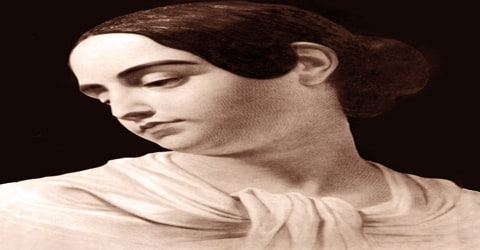
From 1831 to 1835, Edgar Allan Poe lived in Baltimore, where his father was born, with his aunt Maria Clemm and her daughter, his cousin Virginia. He began to devote his attention to Virginia, who became his literary inspiration as well as his love interest. The couple married in 1836 when she was only 13 years old. In 1847, at the age of 24 the same age when Poe’s mother and brother also died Virginia passed away from tuberculosis.
Career and Works

In 1827, when he was just eighteen, Poe published his first book, Tamerlane. His second poetry collection, Al Aaraaf, Tamerlane, and Minor Poems, was published in 1829. As a critic at the Southern Literary Messenger in Richmond from 1835 to 1837, Poe published some of his own works in the magazine, including two parts of his only novel, The Narrative of Arthur Gordon Pym.
In March 1825, John Allan’s uncle and business benefactor William Galt, said to be one of the wealthiest men in Richmond, died, leaving Allan several acres of real estate. The inheritance was estimated at $750,000 (equivalent to $16,000,000 in 2017). By summer 1825, Allan celebrated his expansive wealth by purchasing a two-story brick home named Moldavia. Poe may have become engaged to Sarah Elmira Royster before he registered at the one-year-old University of Virginia in February 1826 to study ancient and modern languages.
In 1829 Poe and John reconciled for some time honoring his foster mother’s deathbed wish. John helped Poe to get enrolled in US Military academy at West Point. Before joining the academy he published his second book “Al Araaf.” He was expelled from the academy just after eight months of enrollment. He first served at Fort Independence in Boston Harbor for five dollars a month. That same year, he released his first book, a 40-page collection of poetry titled Tamerlane and Other Poems, attributed with the byline “by a Bostonian”.
Poe successfully sought expulsion from the academy, where he was absent from all drills and classes for a week. He proceeded to New York City and brought out a volume of Poems, containing several masterpieces, some showing the influence of John Keats, Percy Bysshe Shelley, and Samuel Taylor Coleridge. He then returned to Baltimore, where he began to write stories.
In the late 1830s, Poe published Tales of the Grotesque and Arabesque, a collection of short stories. It contained several of his most spine-tingling tales, including “The Fall of the House of Usher,” “Ligeia” and “William Wilson.”
Poe left for New York in February 1831 and released the third volume of poems, simply titled Poems. The book was financed with help from his fellow cadets at West Point, many of whom donated 75 cents to the cause, raising a total of $170. They may have been expecting verses similar to the satirical ones that Poe had been writing about commanding officers. It was printed by Elam Bliss of New York, labeled as “Second Edition,” and including a page saying, “To the U.S. Corps of Cadets this volume is respectfully dedicated”. The book once again reprinted the long poems “Tamerlane” and “Al Aaraaf” but also six previously unpublished poems, including early versions of “To Helen”, “Israfel”, and “The City in the Sea”. He returned to Baltimore to his aunt, brother, and cousin in March 1831. His elder brother Henry had been in ill health, in part due to problems with alcoholism, and he died on August 1, 1831.
In 1833, Poe started publishing his short stories and poems through Baltimore Saturday Visiter. The year 1835 marked a formal start of his career when he joined Southern Literary Messenger as an editor and contributor. Within a year Poe gained wide recognition through his stories and mocking book reviews. He gained the reputation of a critic who fearlessly attacked not just the writing but also openly criticized the author. He also made several contributions to other publications such as ‘Gentleman’s’ magazine, ‘Evening Mirror’ and ‘Graham’s’ magazine.
In 1833 his “MS. Found in a Bottle” won $50 from a Baltimore weekly, and by 1835 he was in Richmond as editor of the Southern Literary Messenger. There he made a name as a critical reviewer and married his young cousin Virginia Clemm, who was only 13. Poe seems to have been an affectionate husband and son-in-law.
After his early attempts at poetry, Poe had turned his attention to prose. He placed a few stories with a Philadelphia publication and began work on his only drama Politian. The Baltimore Saturday Visiter awarded Poe a prize in October 1833 for his short story “MS. Found in a Bottle”. The story brought him to the attention of John P. Kennedy, a Baltimorean of considerable means. He helped Poe place some of his stories and introduced him to Thomas W. White, editor of the Southern Literary Messenger in Richmond. Poe became assistant editor of the periodical in August 1835 but was discharged within a few weeks for having been caught drunk by his boss.
In 1837 Poe moved to New York and then to Philadelphia in 1838. He continued to make contributions in different journals. In spite of his growing success and fame, Poe would always find himself in the middle of financial crises though later he became recognized as the cause of higher wages of writers.
While in New York City in 1838 he published a long prose narrative, The Narrative of Arthur Gordon Pym, combining (as so often in his tales) much factual material with the wildest fancies. It is considered one inspiration of Herman Melville’s Moby Dick. In 1839 he became co-editor of Burton’s Gentleman’s Magazine in Philadelphia. There a contract for a monthly feature stimulated him to write “William Wilson” and “The Fall of the House of Usher,” stories of supernatural horror. The latter contains a study of a neurotic now known to have been an acquaintance of Poe, not Poe himself.
In June 1840, Poe published a prospectus announcing his intentions to start his own journal called The Stylus. Originally, Poe intended to call the journal The Penn, as it would have been based in Philadelphia. In the June 6, 1840 issue of Philadelphia’s Saturday Evening Post, Poe bought advertising space for his prospectus: “Prospectus of the Penn Magazine, a Monthly Literary journal to be edited and published in the city of Philadelphia by Edgar A. Poe.” The journal was never produced before Poe’s death.
In 1841, Poe launched the new genre of detective fiction with “The Murders in the Rue Morgue.” His literary innovations earned him the nickname “Father of Detective Story.” A writer on the rise, he won a literary prize in 1843 for “The Gold Bug,” a suspenseful tale of secret codes and hunting treasure.
In 1843 his “The Gold Bug” won a prize of $100 from the Philadelphia Dollar Newspaper, which gave him great publicity. In 1844 he returned to New York, wrote “The Balloon Hoax” for the Sun, and became sub-editor of the New York Mirror under N.P. Willis, thereafter a lifelong friend.
On January 29, 1845, his poem “The Raven” appeared in the Evening Mirror and became a popular sensation. It made Poe a household name almost instantly, though he was paid only $9 for its publication. It was concurrently published in The American Review: A Whig Journal under the pseudonym “Quarles”.
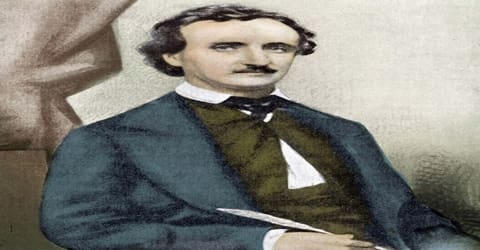
Edgar Allan Poe’s short story “The Black Cat” was published in 1843 in The Saturday Evening Post. In it, the narrator, a one-time animal lover, becomes an alcoholic who begins abusing his wife and black cat. By the macabre story’s end, the narrator observes his own descent into madness as he kills his wife, a crime his black cat reports to the police. The story was later included in the 1845 short story collection, Tales by Edgar Allan Poe.
His The Raven and Other Poems and a selection of his Tales came out in 1845, and in 1846 Poe moved to a cottage at Fordham (now part of New York City), where he wrote for Godey’s Lady’s Book (May–October 1846) “The Literati of New York City” gossipy sketches on personalities of the day, which led to a libel suit.
In 1848 Poe also published the lecture “Eureka,” a transcendental “explanation” of the universe, which has been hailed as a masterpiece by some critics and as nonsense by others. In 1849 he went south, had a wild spree in Philadelphia, but got safely to Richmond, where he finally became engaged to Elmira Royster, by then the widowed Mrs. Shelton, and spent a happy summer with only one or two relapses. He enjoyed the companionship of childhood friends and an unromantic friendship with a young poet, Susan Archer Talley.
‘Annabel Lee’ – This lyric poem again explores Edgar Allen Poe’s themes of death and loss and may have been written in memory of his beloved wife Virginia, who died two years prior. The poem was published on October 9, 1849, two days after Poe’s death, in the New York Tribune.
Later in his career, Poe continued to work in different forms, examining his own methodology and writing in general in several essays, including “The Philosophy of Composition,” “The Poetic Principle” and “The Rationale of Verse.” He also produced the thrilling tale, “The Cask of Amontillado,” and poems such as “Ulalume” and “The Bells.”
Poe’s work owes much to the concern of Romanticism with the occult and the satanic. It owes much also to his own feverish dreams, to which he applied a rare faculty of shaping plausible fabrics out of impalpable materials. With an air of objectivity and spontaneity, his productions are closely dependent on his own powers of imagination and an elaborate technique. His keen and sound judgment as an appraiser of contemporary literature, his idealism and musical gift as a poet, his dramatic art as a storyteller, considerably appreciated in his lifetime, secured him a prominent place among universally known men of letters.
Awards and Honor
The Baltimore home where Edgar Allan Poe stayed from 1831 to 1835 with his aunt Maria Clemm and her daughter, Poe’s cousin and future wife Virginia, is now a museum. The Edgar Allan Poe House’s self-guided tour features exhibits on Poe’s foster parents, his life and death in Baltimore and the poems and short stories he wrote while living there, as well as memorabilia including his chair and desk.
Death and Legacy
Poe was overcome by grief following his wives death, and although he continued to work, he suffered from poor health and struggled financially until his death in 1849.

On October 3, 1849, Poe was found delirious on the streets of Baltimore, “in great distress, and… in need of immediate assistance”, according to Joseph W. Walker who found him. He was taken to the Washington Medical College where he died on Sunday, October 7, 1849, at 5:00 in the morning. His last words were “Lord, help my poor soul.”
At the time, it was said that Poe died of “congestion of the brain.” But his actual cause of death has been the subject of endless speculation. Some experts believe that alcoholism led to his demise while others offer up alternative theories. Rabies, epilepsy, and carbon monoxide poisoning are just some of the conditions thought to have led to the great writer’s death.
The day that Edgar Allan Poe was buried, a long obituary appeared in the New York Tribune signed “Ludwig”. It was soon published throughout the country. The piece began, “Edgar Allan Poe is dead. He died in Baltimore the day before yesterday. This announcement will startle many, but few will be grieved by it.” “Ludwig” was soon identified as Rufus Wilmot Griswold, an editor, critic, and anthologist who had borne a grudge against Poe since 1842. Griswold somehow became Poe’s literary executor and attempted to destroy his enemy’s reputation after his death.
While he never had financial success in his lifetime, Poe has become one of America’s most enduring writers. His works are as compelling today as they were more than a century ago. An innovative and imaginative thinker, Poe crafted stories and poems that still shock, surprise and move modern readers. His dark work influenced writers including Charles Baudelaire, Dostoyevsky, and Stephane Mallarme.
More generally, in such verses as “The Valley of Unrest,” “Lenore,” “The Raven,” “For Annie,” and “Ulalume” and in his prose tales, his familiar mode of evasion from the universe of common experience was through eerie thoughts, impulses, or fears. From these materials he drew the startling effects of his tales of death (“The Fall of the House of Usher,” “The Masque of the Red Death,” “The Facts in the Case of M. Valdemar,” “The Premature Burial,” “The Oval Portrait,” “Shadow”), his tales of wickedness and crime (“Berenice,” “The Black Cat,” “William Wilson,” “The Imp of the Perverse,” “The Cask of Amontillado,” “The Tell-Tale Heart”), his tales of survival after dissolution (“Ligeia,” “Morella,” “Metzengerstein”), and his tales of fatality (“The Assignation,” “The Man of the Crowd”).
It is believed that only 12 copies have survived of Poe’s first book Tamerlane and Other Poems. In December 2009, one copy sold at Christie’s, New York for $662,500, a record price paid for a work of American literature.
Information Source:

